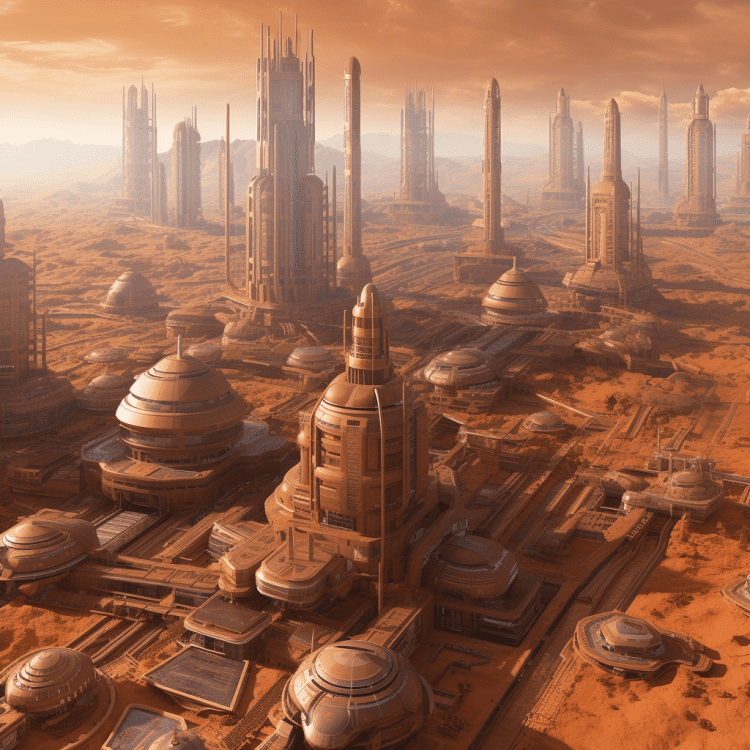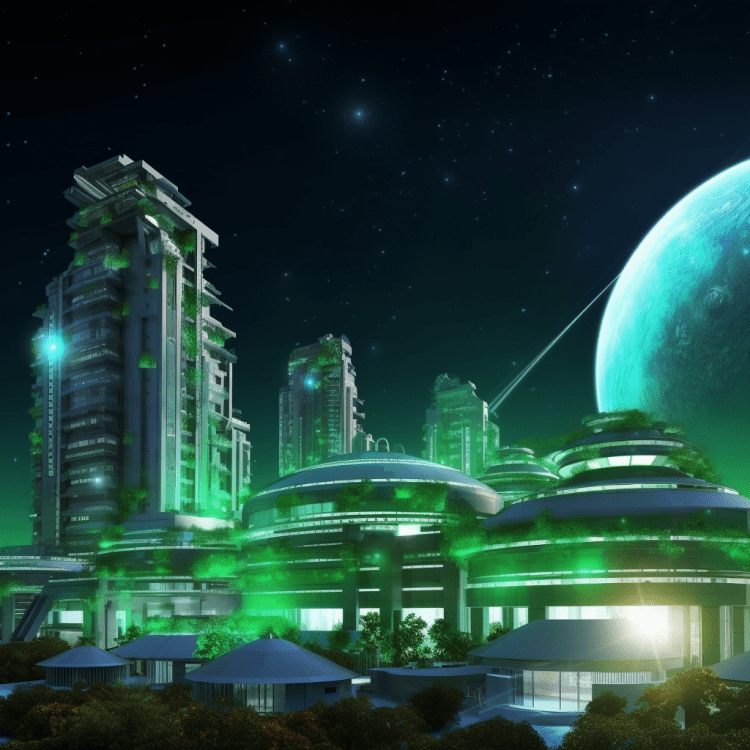
Behind the Chaos That Keeps Us Occupied

Published: June 2025 | Reading Time: 7 minutes
What if someone told you that in 2025, humans would be manufacturing products in zero gravity, mining asteroids for precious metals, and planning permanent settlements on Mars? You’d probably think they’d been reading too much science fiction. Yet here we are, living in an era where yesterday’s impossible dreams are today’s engineering projects.
The boundary between science fiction and space reality has never been thinner. Let’s explore the mind-bending space breakthroughs of 2025 that sound like they belong in a sci-fi novel—but are actually happening right now.
The New Space Race: Private Companies Leading the Charge
SpaceX’s Starship: Making Mars Accessible
Elon Musk’s Starship program has achieved what NASA only dreamed of decades ago. In 2025, the fully reusable spacecraft has completed its first crewed mission to Mars orbit, carrying a crew of six astronauts on a 9-month journey that would have been pure fantasy just ten years ago. According to SpaceX’s latest mission reports, this achievement represents a fundamental shift in space accessibility.
2025 Achievements:
- Successful Mars orbital mission with crew return
- 100+ successful orbital refueling operations
- Weekly cargo launches to the International Space Station
- Lunar Starship preparing for permanent Moon base construction
The most science-fiction-like aspect? The entire mission was planned, executed, and funded by a private company—something that would have been unthinkable when NASA dominated space exploration.
Blue Origin’s Orbital Reef: A City in Space
Jeff Bezos’s vision of millions of people living and working in space is materializing faster than anyone predicted. Blue Origin’s Orbital Reef commercial space station, operational since late 2024, now hosts:
- Manufacturing facilities producing fiber optics impossible to create on Earth
- Research laboratories developing new medicines in microgravity
- Tourism modules where civilians can experience weightlessness
- Agricultural experiments growing food for future Mars missions
What sounds like a scene from a space opera is actually live-streamed 24/7 from 250 miles above Earth.
Asteroid Mining: The Ultimate Resource Rush
Planetary Resources and Deep Space Industries
Remember when asteroid mining was pure science fiction? In 2025, it’s a multi-billion-dollar industry. Companies like Planetary Resources have successfully extracted water, platinum, and rare earth elements from near-Earth asteroids, as documented in NASA’s asteroid mining feasibility reports.
Current Operations:
- Asteroid Bennu mining project yielding $2.1 billion in precious metals
- Water extraction providing fuel for deep space missions
- Rare earth mining reducing Earth’s environmental impact
- Orbital refineries processing materials in space
The economics are staggering: a single metallic asteroid contains more platinum than has ever been mined on Earth. What once required interstellar empires in sci-fi novels now happens in our solar system.
For more on how space technology influences Earth-based innovation, explore our article on AI systems managing complex resource allocation.
The Space Economy Boom
The asteroid mining industry has created the first true space economy:
- Space-based manufacturing worth $500 billion annually
- Orbital logistics companies managing cargo between Earth and space
- Space insurance covering multi-billion-dollar asteroid claims
- Zero-gravity research facilities producing revolutionary materials
Mars: From Red Planet to Future Home
NASA’s Artemis Mars Program
Building on the success of lunar operations, NASA’s Artemis program has established the first permanent research station on Mars. The Olympus Base, operational since March 2025, represents humanity’s first foothold on another planet, as detailed in NASA’s Mars exploration timeline.
Mars Base Achievements:
- Sustainable life support systems recycling 95% of water and oxygen
- In-situ resource utilization creating fuel and building materials from Martian atmosphere
- Agricultural domes growing fresh food on Martian soil
- 3D printing facilities creating tools and structures from local materials
The base operates like something straight out of The Martian, but with technology that surpasses even Andy Weir’s imagination. Learn more about the psychological challenges of Mars colonization in our exploration of dystopian fiction and isolation themes.
Terraforming Experiments Begin
Perhaps most sci-fi-like of all, scientists have begun small-scale terraforming experiments on Mars. Using atmospheric processors and genetically modified bacteria, researchers are slowly increasing oxygen levels in controlled environments around Olympus Base.
While full planetary terraforming remains centuries away, these baby steps represent humanity’s first attempt to reshape an entire world—a concept that was pure fantasy just decades ago.
Revolutionary Propulsion Technologies
Nuclear Thermal Propulsion
NASA’s nuclear thermal rockets, successfully tested in 2025, cut Mars travel time from 9 months to just 3-4 months. This technology, long a staple of science fiction, uses nuclear reactors to heat propellant to extreme temperatures, creating unprecedented thrust efficiency.
Breakthrough Achievements:
- 45-day Earth-Mars transit times during optimal launch windows
- Deep space exploration missions to Jupiter’s moons
- Heavy cargo delivery to Mars in record time
- Reduced radiation exposure for astronauts on shorter journeys
Ion Drives and Solar Sails
Electric propulsion systems have evolved beyond recognition. The latest ion drives can accelerate spacecraft to 200,000 mph over time, while new solar sail designs harness both solar wind and laser propulsion for interstellar missions.
The Breakthrough Starshot project has successfully deployed its first interstellar probe, a tiny spacecraft accelerated to 20% of light speed using laser-powered solar sails. Expected to reach Proxima Centauri in 20 years, this represents humanity’s first attempt at interstellar exploration.
Orbital Manufacturing: The Ultimate High-Tech Factory
Zero-Gravity Production
Microgravity manufacturing has revolutionized multiple industries:
Fiber Optics: Perfect crystals grown in space transmit data 10x faster than Earth-made alternatives
Pharmaceuticals: Protein crystals grown in microgravity are larger and more pure, enabling new drug discoveries
Alloys: Metal combinations impossible on Earth create materials stronger than anything terrestrial
Biotechnology: Organ printing in zero gravity produces tissue structures impossible under Earth’s gravity
These developments mirror the advanced manufacturing described in hard science fiction, where space-based industry drives technological advancement.
Space Habitats: Cities Among the Stars
O’Neill Cylinders and Stanford Tori
While still in planning phases, several companies are developing rotating space habitats that could house thousands of people. These massive structures, inspired by Gerard K. O’Neill’s 1970s designs, use rotation to create artificial gravity.
Planned Features:
- Earth-like gravity through rotation
- Controlled climate and weather systems
- Agricultural zones providing fresh food
- Industrial sectors for zero-gravity manufacturing
- Residential areas with parks and recreation facilities
These aren’t generational ships heading to distant stars—they’re permanent homes in Earth orbit, representing the first steps toward space colonization.
Interplanetary Internet and Communication
Quantum Communication Networks
The most sci-fi breakthrough might be the development of quantum communication networks spanning the solar system. Using quantum entanglement, messages between Earth and Mars now have minimal delay, regardless of planetary positions.
2025 Network Capabilities:
- Instantaneous communication across vast distances
- Unhackable quantum encryption for secure space operations
- Solar system-wide internet connecting all human outposts
- AI coordination between planetary bases and orbital facilities
This technology enables coordinated operations across multiple worlds—a concept central to space-faring civilizations in science fiction.
The Search for Life: From Fiction to Discovery
Advanced Life Detection
Space exploration in 2025 has deployed technology that would make xenobiologists in sci-fi novels jealous:
DNA Sequencers in Space: Portable devices capable of analyzing genetic material from samples collected on Mars and Europa
Atmospheric Analyzers: Spectroscopic equipment detecting biosignatures in exoplanet atmospheres
Subsurface Drilling: Mars and lunar drilling projects reaching depths where life might exist
Europa Landers: Missions preparing to drill through ice to reach the subsurface ocean
While we haven’t found definitive proof of extraterrestrial life, the technology to detect it has never been more sophisticated.
Challenges That Still Sound Like Sci-Fi
Radiation Shielding
Long-term space travel still faces the radiation challenge. Current solutions include:
- Magnetic field generators creating artificial magnetospheres around spacecraft
- Water-based shielding using recycled waste water as radiation barriers
- Pharmaceutical countermeasures reducing radiation damage to human cells
- Hibernation research potentially reducing exposure time for long journeys
Closed-Loop Life Support
Creating truly sustainable life support systems remains challenging:
- Atmospheric recycling systems approaching 99% efficiency
- Food production in controlled environments with minimal waste
- Water reclamation from all possible sources, including human waste
- Psychological support systems for isolated crews
The Economic Revolution of Space
Space-Based Solar Power
Perhaps the most transformative technology is space-based solar power. Orbital solar arrays, unobstructed by atmosphere or weather, beam clean energy to Earth via microwave transmission.
2025 Pilot Projects:
- 1 megawatt demonstration successfully powering 1,000 homes
- 24/7 power generation unaffected by Earth weather
- Carbon-free energy with minimal environmental impact
- Scalable technology potentially meeting global energy needs
This technology could solve Earth’s energy crisis while funding further space exploration—the ultimate virtuous cycle.
Space Tourism: The Final Frontier Goes Mainstream
Beyond Suborbital Flights
Space tourism has evolved far beyond brief suborbital hops:
Orbital Hotels: Week-long stays in luxury space stations with Earth views
Lunar Tourism: 3-day trips to the Moon’s surface for the ultra-wealthy
Zero-G Sports: Orbital competitions in three-dimensional sports impossible on Earth
Space Weddings: Couples getting married while floating in Earth orbit
What started as science fiction fantasy has become the ultimate luxury experience.
The NewDawn of Space Exploration
The space breakthroughs of 2025 represent more than technological achievement—they’re the foundation of humanity’s future as a multi-planetary species. Like the best science fiction, they force us to reimagine what’s possible and challenge our assumptions about human limitations.
From asteroid mining to Mars colonization, from quantum communication to space manufacturing, the future depicted in science fiction is becoming our present reality. The only question is: what impossible dream will become tomorrow’s breakthrough?
As we stand on the threshold of becoming a true spacefaring civilization, perhaps the most important lesson from science fiction is that the biggest limitation isn’t technology—it’s imagination. The space breakthroughs of 2025 prove that with enough vision, determination, and engineering brilliance, even the most fantastic sci-fi concepts can become reality.
The universe is vast, full of possibilities, and finally within our reach. The age of exploration has begun anew—this time among the stars.
Fascinated by humanity’s spacefaring future? Explore these themes in interactive detail through games like Ang City 2098 and the NewDawn series, where space exploration, advanced technology, and human determination create compelling narratives about our cosmic destiny. Discover how AI systems like DAINN manage interplanetary resources in ways that mirror today’s space industry innovations. Follow the author’s space exploration insights at dominiqueluchart.com.
Related Reading:
- AI Taking Over in 2025: Science Fiction vs Reality
- Dystopian Fiction That Predicted 2025 Perfectly
- The NewDawn Universe: Where Technology Meets Adventure
- Author’s Space Technology Analysis
Shop NewDawn Space Adventures:
External Resources:
SEO Keywords: space exploration 2025, Mars colonization, asteroid mining, space technology, SpaceX achievements, space breakthroughs, future space travel, space manufacturing, orbital stations
